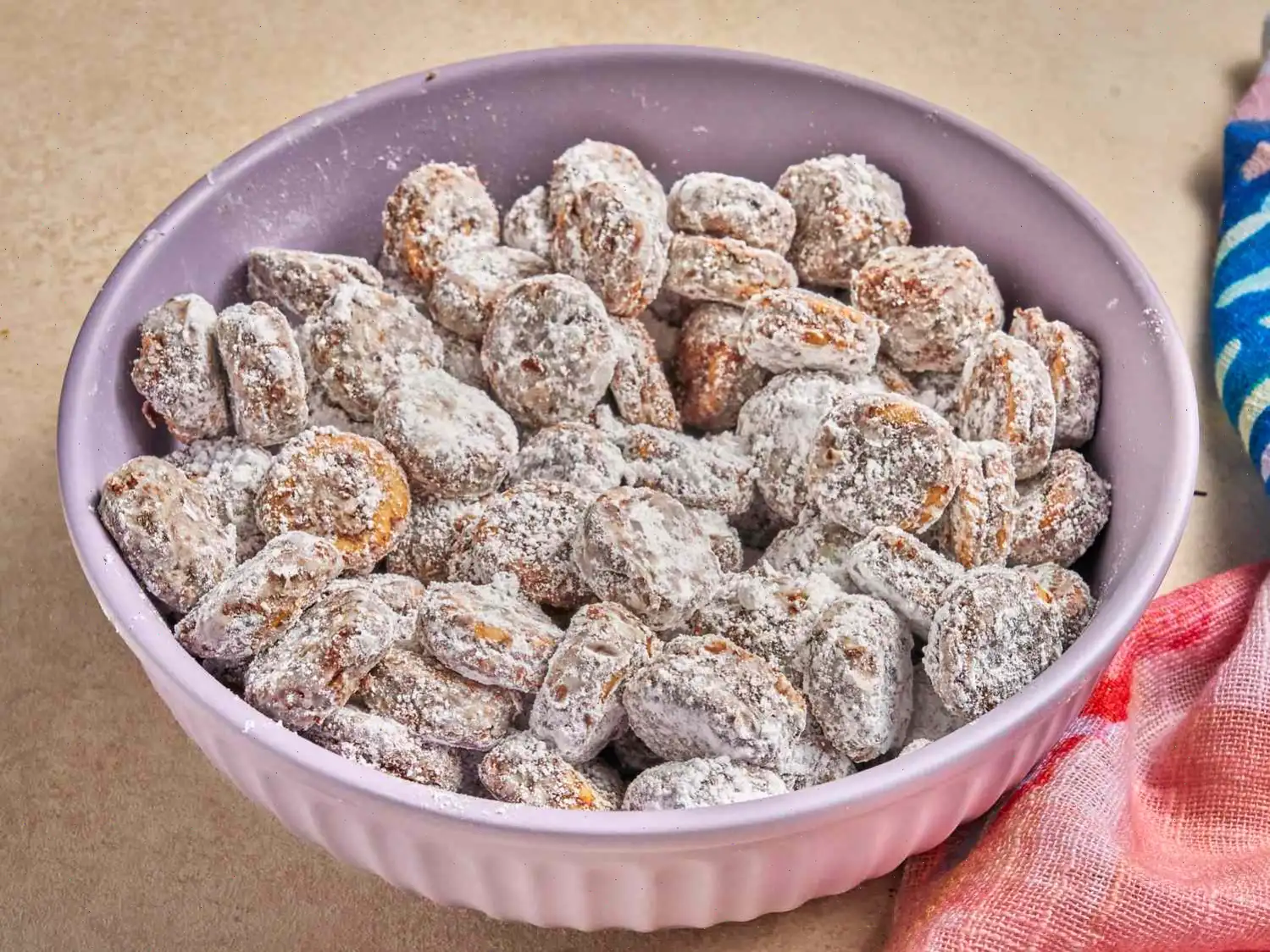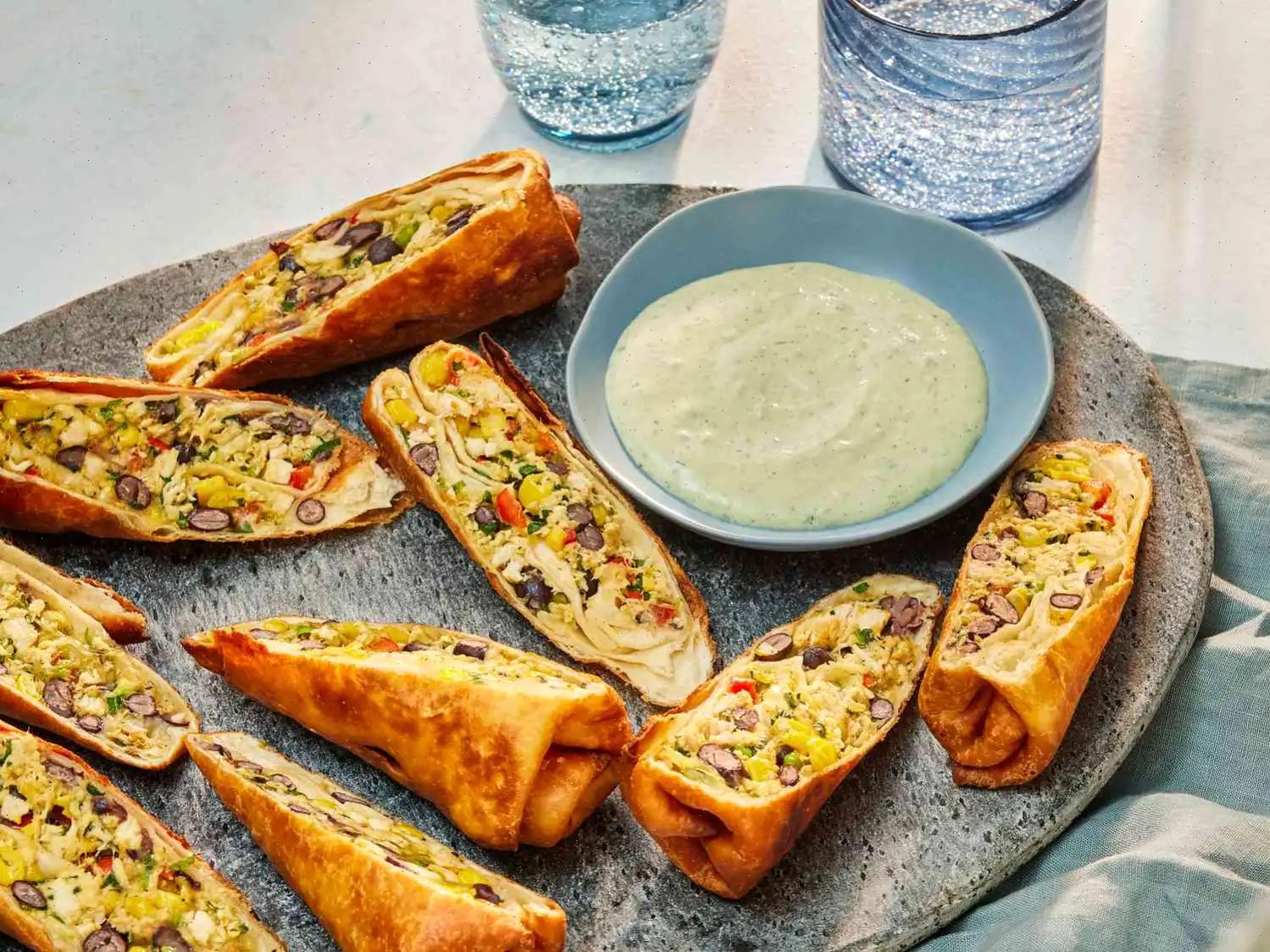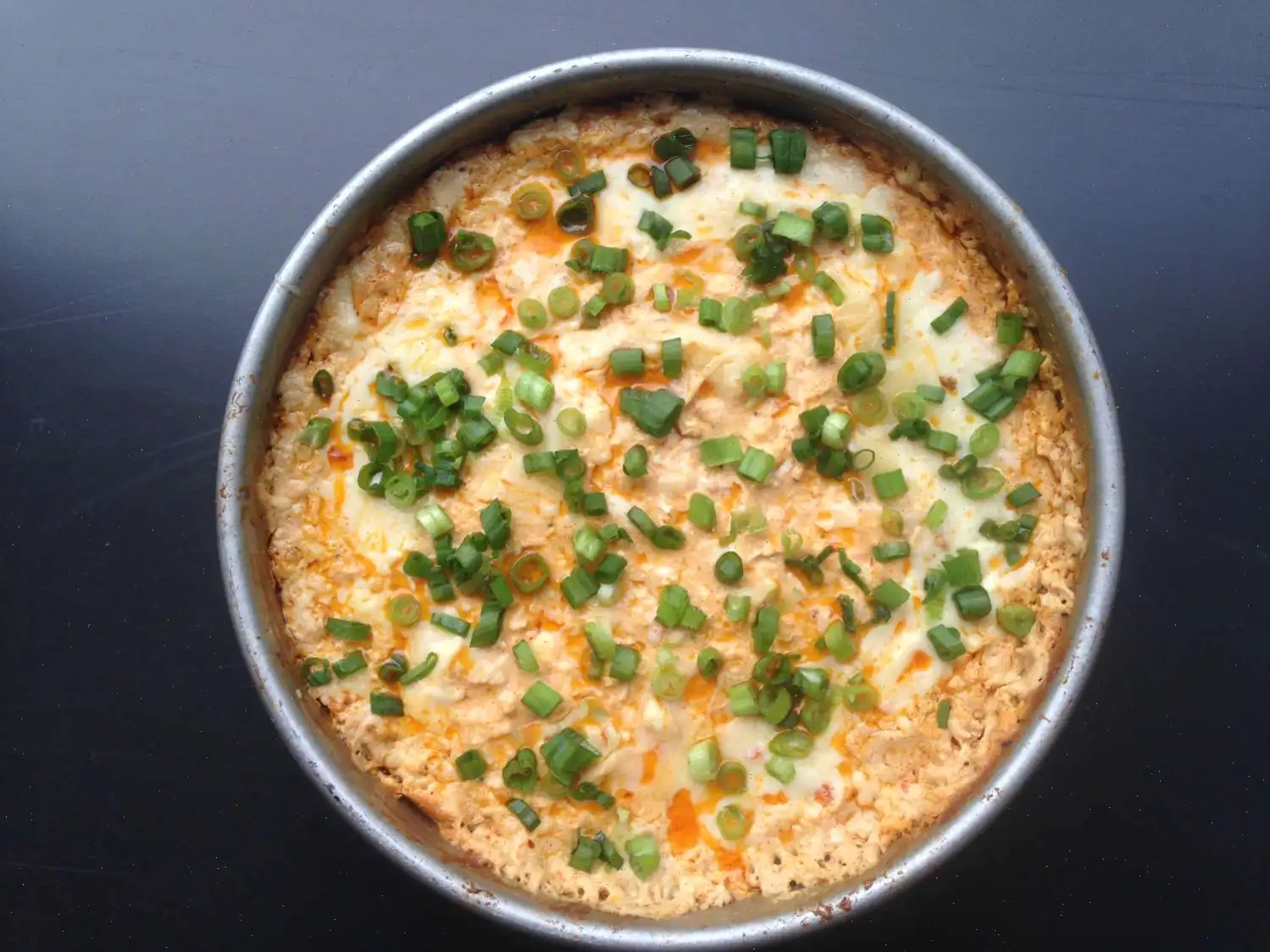
Cantonese Style Pork and Shrimp Dumplings Recipe
Ingredients
This recipe was developed at its original yield. Ingredient amounts are automatically adjusted, but cooking times and steps remain unchanged. Note that not all recipes scale perfectly.
Original recipe (1X) yields 10 servings:
- pound ground pork
- 1 cup chopped watercress
- (8 ounce) can water chestnuts, drained and chopped
- cup chopped green onions
- 1 tablespoon oyster sauce
- 1 tablespoons sesame oil
- 1 teaspoon minced garlic
- 1 teaspoon soy sauce
- 1 teaspoon ground white pepper
- 1 teaspoon salt
- 1 (16 ounce) package round dumpling skins
- 1 pound peeled and deveined medium shrimp
Directions
Step 1: In a large bowl, combine the ground pork, chopped watercress, chopped water chestnuts, green onions, oyster sauce, sesame oil, minced garlic, soy sauce, ground white pepper, and salt. Mix well to combine all the ingredients.
Step 2: Take a dumpling skin and place teaspoon of the filling mixture onto the center of the skin.
Step 3: Place one shrimp on top of the filling and slightly wet the edge of the dumpling skin with water.
Step 4: Fold the dumpling skin over to encase the filling and shrimp. Pinch the edges together with your fingers to form a seal all the way around the dumpling.
Step 5: To cook, you have two options:
- Pan-fry the dumplings in a large skillet over medium heat with a little oil for 15 minutes, turning them halfway through to ensure even cooking.
- Alternatively, you can place the dumplings in a pot of boiling water and cook for 10 minutes. Once cooked, drain and serve them in hot chicken broth for a comforting dish.
Nutrition Facts (per serving)
| Nutrient | Amount | % Daily Value* |
|---|---|---|
| Calories | 234 | |
| Total Fat | 6g | 8% |
| Saturated Fat | 2g | 8% |
| Cholesterol | 81mg | 27% |
| Sodium | 402mg | 17% |
| Total Carbohydrate | 28g | 10% |
| Dietary Fiber | 1g | 4% |
| Total Sugars | 0g | |
| Protein | 16g | 32% |
| Vitamin C | 3mg | 4% |
| Calcium | 53mg | 4% |
| Iron | 3mg | 16% |
| Potassium | 187mg | 4% |
* Percent Daily Values are based on a 2,000 calorie diet. Your daily values may be higher or lower depending on your calorie needs.
** Nutrient information is not available for all ingredients. Amount is based on available nutrient data.
If you are following a medically restrictive diet, please consult your doctor or registered dietitian before preparing this recipe for personal consumption.
Origin History: The Cantonese style pork and shrimp dumplings, also known as "shumai" or "siu mai" in Chinese, have their roots in the Guangdong province of southern China. This dish is a classic example of Cantonese dim sum cuisine, which is a popular style of eating that involves small, flavorful portions of food served in steamer baskets or on small plates. Dim sum itself originated in the tea houses of Guangdong during the Qing Dynasty, where it was served as an accompaniment to tea. Over time, these bite-sized delicacies have spread throughout the world and become a beloved dish, especially in Chinese communities.
Regional Features:
Cantonese cuisine is known for its subtle and balanced flavors, focusing on fresh ingredients and natural tastes. Cantonese dumplings, including pork and shrimp varieties, are typically steamed to preserve their freshness. These dumplings feature a delicate mixture of ground pork, shrimp, watercress, and water chestnuts, with a subtle seasoning of soy sauce and sesame oil. In contrast to the more heavily spiced flavors of northern Chinese cooking, Cantonese dishes are lighter, allowing the ingredients to shine through.Differences from Similar Dishes:
Cantonese pork and shrimp dumplings stand apart from similar dumpling varieties from other regions in China. For instance, northern Chinese dumplings (like jiaozi) often feature a thicker, boiled dough wrapper, and may include a variety of fillings, such as ground pork or beef, and strong seasonings like ginger and garlic. Cantonese dumplings, on the other hand, use a thinner, delicate wrapper and focus more on the texture of the filling. Another notable difference is the steaming technique, which preserves the dumplings moisture, creating a softer texture compared to the pan-fried or boiled versions found in other regions.Where They Are Typically Served:
These dumplings are commonly served in dim sum restaurants across the world. In Cantonese-speaking regions, they are an essential part of the dim sum experience, usually enjoyed with a cup of tea. The dumplings are often served as appetizers or snacks, and are sometimes paired with dipping sauces like soy sauce, vinegar, or chili oil. They can also be served as part of a larger meal in Chinese restaurants. Outside of China, Cantonese-style dumplings are popular in dim sum eateries in cities with significant Chinese communities, such as New York, San Francisco, and Vancouver.Interesting Facts:
- Dim sum, including pork and shrimp dumplings, is traditionally served during brunch hours, typically between 10 a.m. and 2 p.m., which is why the meal is often referred to as "yum cha" (literally "drink tea").
- The combination of shrimp and pork in these dumplings is meant to balance the flavors of the delicate seafood with the rich, savory pork, creating a harmonious bite.
- In many Cantonese homes, the preparation of dumplings is a communal activity. Family members gather together to wrap the dumplings, which is seen as an opportunity to bond and celebrate tradition.
- While Cantonese dumplings are most commonly steamed, variations of the dish can also be pan-fried or boiled, depending on personal preference or regional differences.
- In traditional Chinese culture, the act of making and sharing dumplings is thought to bring good luck and prosperity, especially during the Lunar New Year celebrations.
You can listen to this recipe in AI audio format. Simply click the play button below to listen to the content in a format that suits you best. It’s a great way to absorb information on the go!
FAQ about Cantonese Style Pork and Shrimp Dumplings Recipe
Comments
Laura Thompson
11/11/2022 05:28:09 PM
This recipe turned out fantastic! I adjusted the amount of sesame oil since it can be quite overpowering. I will definitely be making it again as it was really easy. I used ground chicken because that's what I had, and it turned out wonderfully! Thanks for sharing the recipe!
Joyce Williams
02/21/2024 07:16:55 AM
These dumplings are simply amazing! They always get fantastic reviews whenever I cook them. I love using a food processor to make the preparation process easier, and I prefer cooking them in a bamboo steamer as it's simpler than boiling, healthier than frying, and I was lucky enough to have one on hand.
Christopher Perez
03/06/2025 11:52:35 PM
These were incredibly delicious. They require minimal oil for cooking. I discovered that they cooked more evenly on medium heat rather than medium high. I whipped up a delightful dipping sauce to accompany them, creating a delightful meal!
Matthew Flores
11/22/2024 05:32:31 AM
This recipe is absolutely delicious! I made a few tweaks, including incorporating extra pork and dicing the shrimp before mixing it in.
Stephen Taylor
08/20/2023 02:09:36 PM
Decent, but not outstanding.
Nathan Flores
12/10/2023 07:57:05 PM
I followed the recipe exactly, but unfortunately, the dish turned out bland and lacking in flavor. Disappointing result, won't be trying it again.
Mary Gonzalez
04/07/2025 02:42:04 AM
Great! I didn't fry it as long as the recipe suggested, but it turned out amazing! Thank you!







